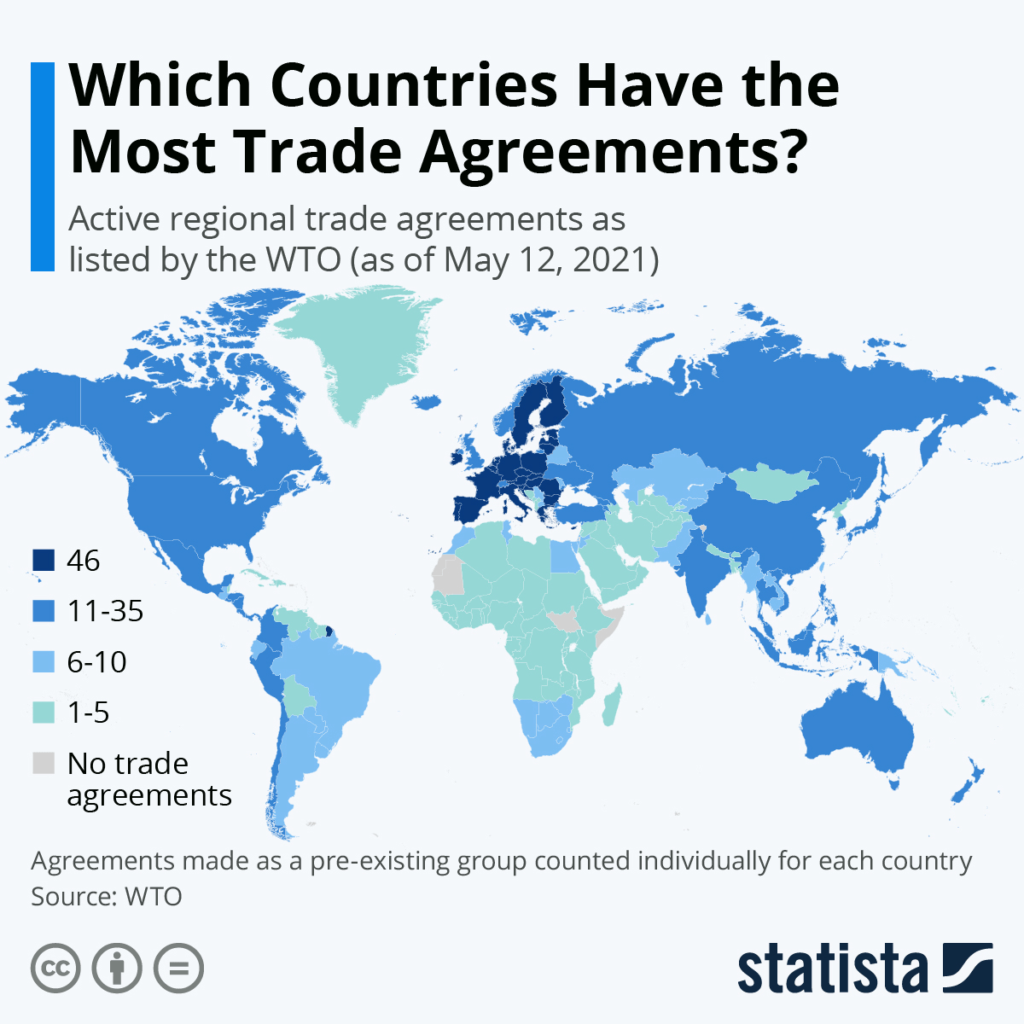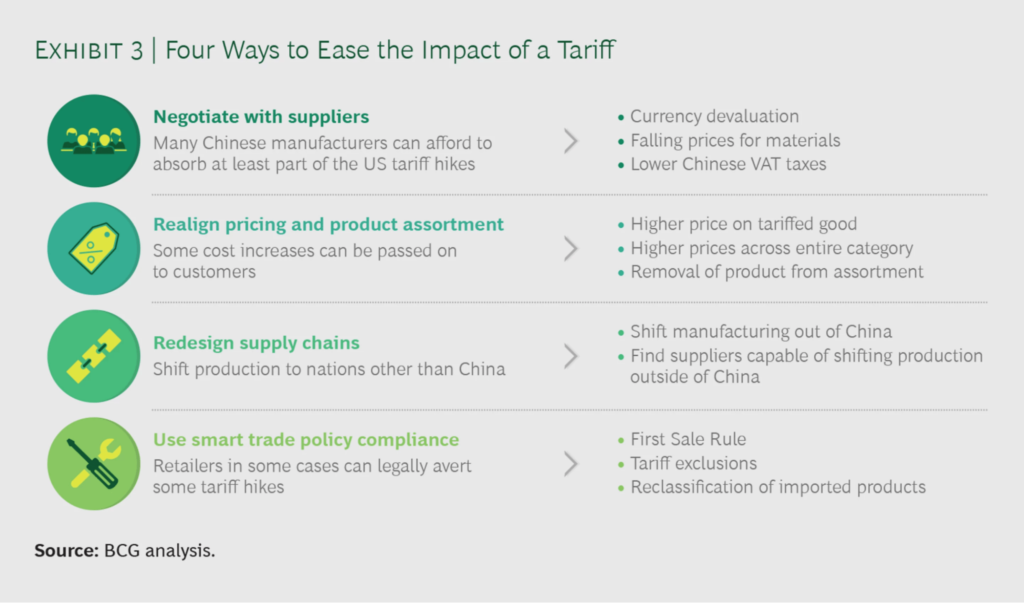Global trade has become more complex, and trade policies and tariffs greatly affect the dynamics of international sourcing. For companies sourcing products from China, knowledge of cost control, compliance, and supply chain effectiveness is essential. This article provides a detailed overview of tariffs and trade rules, their impact on sourcing from China, and effective approaches to solve these issues based on our experience at Source One.
What Are Tariffs Used For?
Tariffs are taxes levied by the government on imported products and services. They serve several functions, including:
- Revenue Generation: Governments employ tariffs to earn money.
- Protecting Domestic Industries: Tariffs can safeguard domestic businesses from foreign competition by increasing the cost of imported goods.
- Trade Policy Tools: Tariffs are commonly employed in trade negotiations and to correct trade imbalances.
Types of Tariffs
- Ad Valorem Tariffs: These tariffs are based on a proportion of the value of imported goods.
- Specific Tariffs: These are fixed levies based on the amount or weight of the commodities.
- Compound Tariffs: These are a mix of ad valorem and specific duties.
Recent Tariff Trends
Tariffs have lately emerged as a prominent issue in trade policy, particularly between the United States and China. Large tariff increases on a broad range of items have resulted from trade disputes between these two economic powerhouses. These tariffs have affected companies globally, changing cost structures and supply chain strategies.
Impact of Tariffs on Sourcing from China
- Increased Costs: Tariffs immediately raise the cost of imported goods, reducing company margins.
- Supply Chain Disruptions: Sudden tariff changes can disrupt existing supply networks, forcing enterprises to look for new suppliers or routes.
- Compliance and Administrative Burden: Navigating tariff regulations necessitates extensive paperwork and compliance activities, which raises administrative costs.
Trade Policies and Agreements
Trade policies and agreements are crucial in defining the foundation for international commerce. Key trade rules and agreements that impact sourcing from China include:
- World Trade Organization (WTO): China’s membership in the WTO allows it to gain access to global markets but also subjects it to various trade regulations and dispute settlement systems.
- Bilateral Trade Agreements: Specific agreements between China and other nations have the potential to impact tariffs and trade arrangements. For example, the Phase One trade agreement between the United States and China aimed to cut some tariffs while increasing China’s purchases of US commodities.
- The Regional Comprehensive Economic Partnership (RCEP): This is a major trade pact between China and other Asia-Pacific nations that intends to lower tariffs and increase regional trade facilitation.
Strategies to Navigate Tariffs and Trade Policies
At Source One, we’ve developed and implemented several strategies to effectively navigate tariffs and trade policies based on our extensive experience:
- Diversification of the Supply Chain: Mitigating risk by spreading suppliers across many nations can lessen reliance on a single source and spread tariff impacts. For instance, we’ve diversified our supplier network to include countries like Vietnam, India, and Thailand.
- Reshoring and Nearshoring: Moving production closer to the end market or back to the home country can lower vulnerability to international trade regulations and tariffs, although it could still mean higher costs overall. We’ve assisted clients in evaluating the cost-benefit analysis of reshoring certain product lines.
- Using Free Trade Zones: Utilizing free trade zones or bonded warehouses can delay or decrease tariff responsibilities. We have successfully leveraged these zones to optimize our clients’ tariff obligations.
- Trade Compliance Programs: Implementing robust trade compliance processes ensures compliance with all regulatory standards, lowering the risk of penalties and delays. Source One has developed comprehensive compliance protocols to manage these requirements effectively.
- Tariff Engineering: This involves modifying the product categorization and lowering tariff rates by altering its design or assembly methods. We have advised clients on how to reclassify products to benefit from lower tariffs.
- Negotiating with Suppliers: Engaging suppliers in cost-sharing negotiations or requesting pricing modifications to mitigate the effects of tariffs. Our negotiations have resulted in significant cost savings for our clients.

Source: Statista website
The United States-China Trade War
The US-China trade dispute demonstrates how tariffs and trade policy can affect sourcing methods. Tariffs on hundreds of billions of dollars’ worth of commodities prompted numerous corporations to:
- Re-evaluate Supplier Base: Companies expanded their supplier base,looking for opportunities in Vietnam, India, and other countries to avoid tariff consequences. We guided several clients through this transition.
- Cost Management: Businesses negotiated with Chinese suppliers to reduce costs or sought alternate materials and components to cover rising expenses. Source One has been instrumental in facilitating these negotiations.
- Investment in Technology: Increased investment in tech and automation has helped to mitigate growing costs while also improving efficiency. We’ve supported clients in implementing these technologies to streamline their operations.

Source: Boston Consulting Group website
Understanding and Managing Non-Tariff Barriers
In addition to tariffs, non-tariff barriers (NTBs) such as quotas, import permits, and standards can impact sourcing from China. Understanding these hurdles is critical for a seamless commerce process. At Source One, we’ve helped clients navigate these barriers by:
- Quotas: Managing limits on the amount of particular commodities that can be imported.
- Import Licenses: Assisting with the requirements for obtaining a permit to import specified items.
- Standards and Regulations: Ensuring compliance with safety, health, and environmental regulations to avoid increased costs and complexity.
The Future of Tariffs and Trade Policies
Tariffs and trade policies are constantly altering in response to geopolitical developments, economic shifts, and policy changes. Companies that source from China must stay informed and respond to these developments. Source One remains vigilant and proactive in monitoring these changes to provide timely advice and solutions to our clients.
Conclusion
Businesses that source from China must understand tariffs and trade regulations. Although tariffs raise prices and cause supply chains to be disrupted, careful planning and creative solutions can assist businesses in minimizing the impact of these issues. By diversifying their supply chain, using free trade zones, building solid compliance procedures, and staying informed about global trade trends, businesses can navigate the complexities of international trade while still profiting from China’s industrial capability.
Maintaining cost-effectiveness and a competitive edge when sourcing from China is contingent on staying flexible and proactive as the global trade scene changes. Source One has years of expertise sourcing from China and various countries for our clients. Get in touch with us right now if you have any concerns regarding tariffs and ways to minimize their potential impact.
